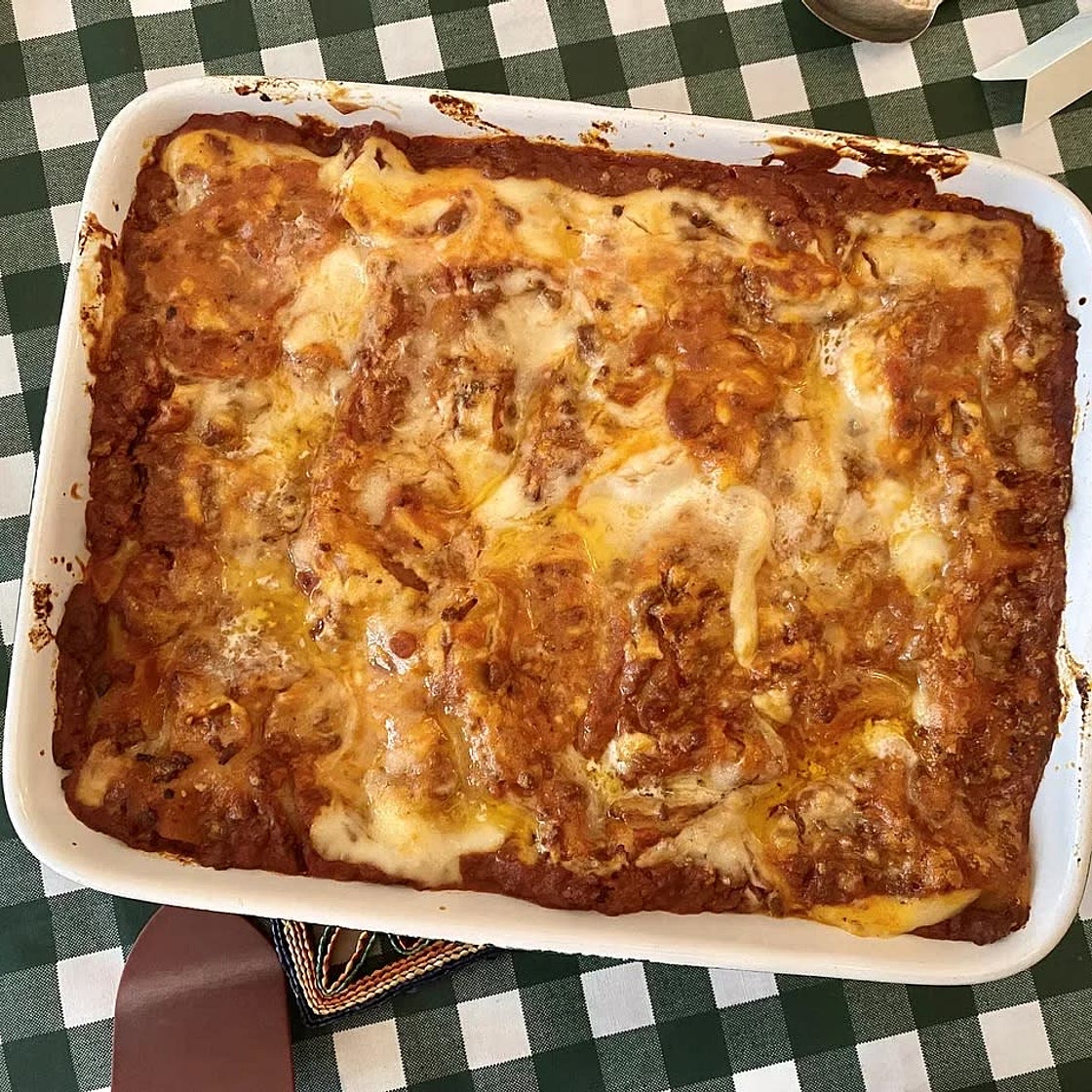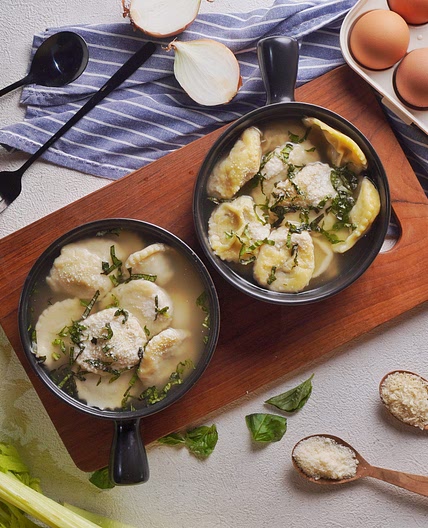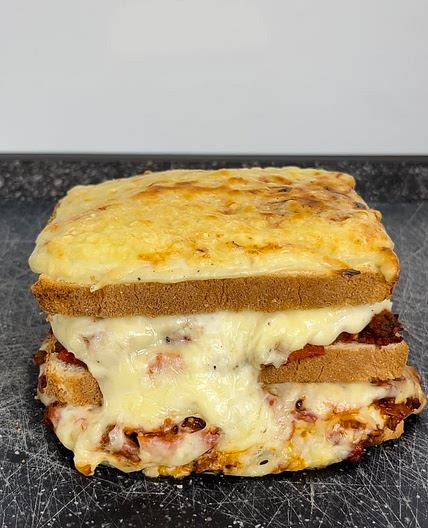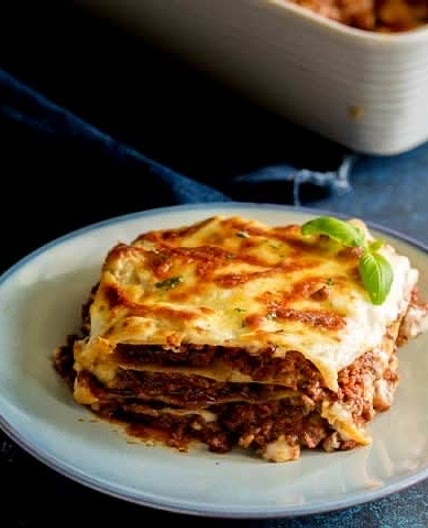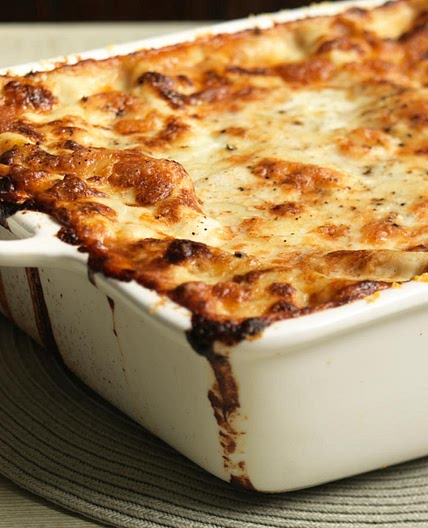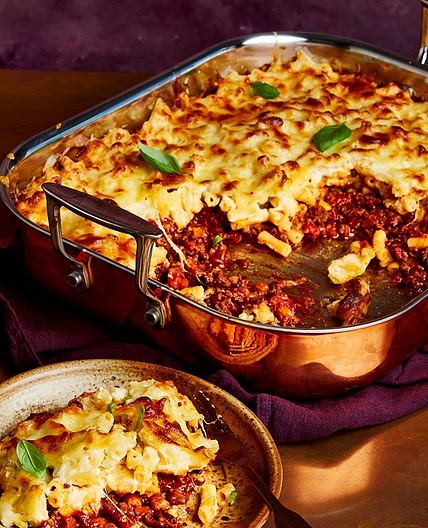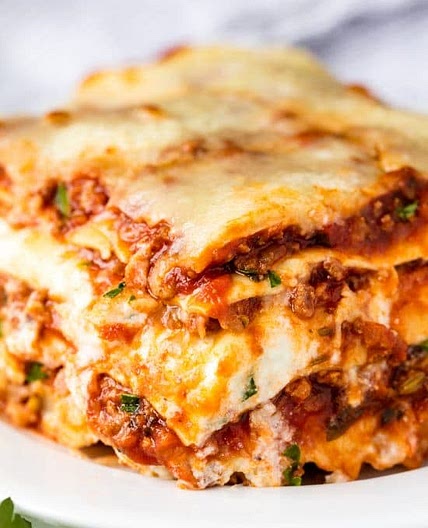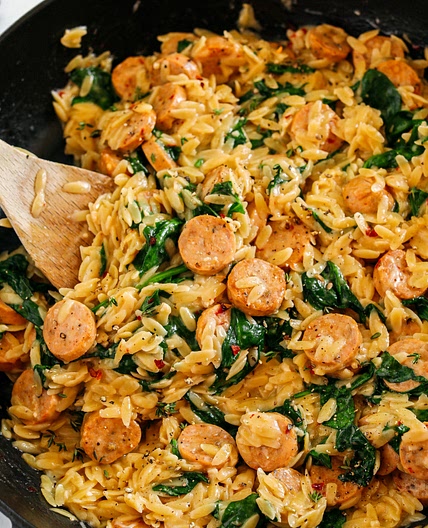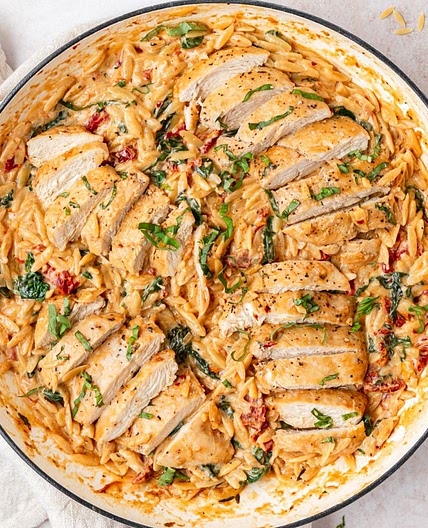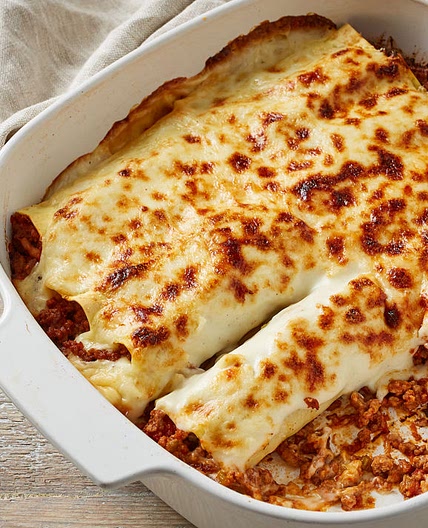Nutrition balance score
Uh-oh! We're unable to calculate nutrition for this recipe because some ingredients aren't recognized.
Ingredients
12 servings
Ragu
2 tablespoonsolive oil
2 tablespoonsbutter
2yellow onions
medium, minced
3carrots
large, minced
2 stalkscelery
minced
2 teaspoonssalt
divided
freshly ground black pepper
to taste
1.1 poundsground beef
1.1 poundsground pork
1 cupred wine
2 bottlestomato passata
Bechamel
⅓ cupunsalted butter
⅔ cupall-purpose flour
4 cupswhole milk
1 teaspoonssalt
to taste
freshly ground black pepper
Pasta
1.5 boxesno boil lasagne sheets
dried -, save leftover sheets for next time
Or*for homemade pasta sheets
To assemble
Instructions
Step 1
First, make the ragù. Put the oil and butter in a large, heavy pot over medium heat. When the butter has melted, add the minced onion and cook for about 5 minutes, stirring often. Do not let it take on any color. Add the minced carrots and celery and season with a teaspoon of salt. Stir well and cook for another 5 minutes.
Step 2
Add the ground meat, freshly ground black pepper and another teaspoon of salt to the pot and, using a wooden spoon, break up the meat as it cooks so that it breaks down into uniformly tiny pieces. Raise the heat to medium-high or high as you do this, which takes some effort. Keep stirring and cooking until the meat is no longer pink. There will be some liquid at the bottom of the pan. Continue to cook until that liquid has reduced by about half.
Step 3
Add the wine and stir well to combine. Cook until the wine has mostly evaporated, 2 to 3 minutes.
Step 4
Add the tomato passata, rinsing out the bottles with a bit of water and adding to the pot as well, and stir well to combine. As soon as the sauce comes to a simmer, turn the heat down as far as possible (using the small best burner possible), put a lid on the pot and let the sauce cook for at least five hours and up to seven, stirring occasionally. Taste for seasoning and adjust, adding more salt if necessary and stirring well. Set aside to cool completely. The sauce can be frozen or refrigerated until ready to use.
Step 5
To make your own lasagne sheets: Place the flour in a mound on your work surface. Make a well in the middle. Crack the eggs into the well. Using a fork, gently break the yolks and start whisking the eggs, incorporating some of the flour as you whisk. As soon as the mixture starts to become paste-like, set aside the fork and continue with your hands. When the eggs and flour have come together completely, knead until the dough is smooth and elastic, about 5 minutes. Depending on the size of your eggs, you may not need all of the flour, or you may need a bit more than the amount called for.
Step 6
When the dough is ready, divide it in half and, using a rolling pin, roll out half of the dough on a lightly floured surface until 1 mm thick. Cut the dough into rectangles to fit the baking dishes.
Step 7
Bring a large pot of salted, boiling water to the boil. Prepare a large bowl of very cold water and set on the counter next to the stove. Line the work surface with clean dishtowels. Working one at a time, lower a sheet of pasta in the boiling water. Let cook for 1 minute, then, using two wooden spoons, gently remove the pasta from the boiling water and place in the cold water to cool completely. Remove the pasta from the cold water and spread out on the towel to dry. Repeat with the remaining pieces of pasta.
Step 8
When you’re ready to assemble the lasagne, make the béchamel: First, melt the butter over medium heat in a large pot. Add the flour and whisk (preferably with a flat whisk) until the flour is completely absorbed by the butter. Cook, whisking, for a few minutes, until the mixture smells toasty and has taken on a very light color.
Step 9
Pour in a quarter of the milk, whisking constantly to smooth out the sauce. The sauce will thicken almost immediately. Pour in another quarter of the milk and whisk until very smooth.
Step 10
Cook the béchamel until it thickens again, whisking constantly, then pour in another quarter of milk and whisk again. Cook until the béchamel thickens, then add the remaining milk, whisking constantly, and one to two teaspoons of salt and freshly ground black pepper to taste. Cook until the béchamel has thickened and coats the back of a spoon. It should be somewhere between spoonable and pourable. Taste for seasoning and turn off the heat.
Step 11
Assemble the lasagne: First, butter the baking dishes and spread a very small amount of ragù over the bottom. Place a layer of either the cooked homemade lasagne sheets or the uncooked store-bought ones at the bottom of the pans. Top with a few large spoonfuls of ragù and then a few of béchamel. Swirl to combine. Top with two to three tablespoons of grated Parmigiano-Reggiano. Repeat with the next layer of lasagne sheets, ragù, béchamel and grated cheese. In total, aim for five layers, ending with a generous top layer of ragù and béchamel and a very generous sprinkling of grated cheese.
Step 12
At this point, the lasagne can be covered with foil and refrigerated or frozen. Refrigerated, they’ll keep for 2-3 days. Frozen, they’ll keep for up to three months. Defrost in the refrigerator completely before baking.
Step 13
When you’re ready to bake the lasagne, heat the oven to 180°C/350°F. Remove the aluminum foil. Dot the top of the lasagne with small pieces of butter. Bake for 30 to 35 minutes, until a knife sinks into the lasagne easily and the top is starting to brown. Remove from the oven, let sit for 5 to 10 minutes, then serve.
Notes
1 liked
0 disliked
Special occasion
